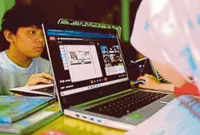TEACHING and learning is a two-way interaction and sadly, during the movement control and lockdown periods, I could only meet my students occassionally to pass them learning materials so many teachers like me resorted to online platforms. It’s the only feasible method of education where a two-way interaction can happen without the need for physical contact. Some teachers have no choice but to visit their students at their homes to hand out modules or to conduct classes somewhere in the kampung with a small number of students but for me, this defeats the purpose of the lockdown. I applaud the teachers for their sacrifices and for their good intention but we have to bear in mind the severity of the pandemic. I am not fond of handing out print materials to students where they are expected to do their homework on their own without guidance from teachers and without giving them the space to respond, request for feedback and ask questions. That’s not teaching, that’s just giving students tons of homework to do and no one likes that — I certainly don’t as an educator. Even if students don’t have laptops and tablets, teachers can still conduct lessons through messaging apps (but a smartphone is still necessary).
A secondary school teacher from Sabah who only wanted to be known as John
Already a subscriber? Log in
Save 30% OFF The Star Digital Access
Cancel anytime. Ad-free. Unlimited access with perks.





